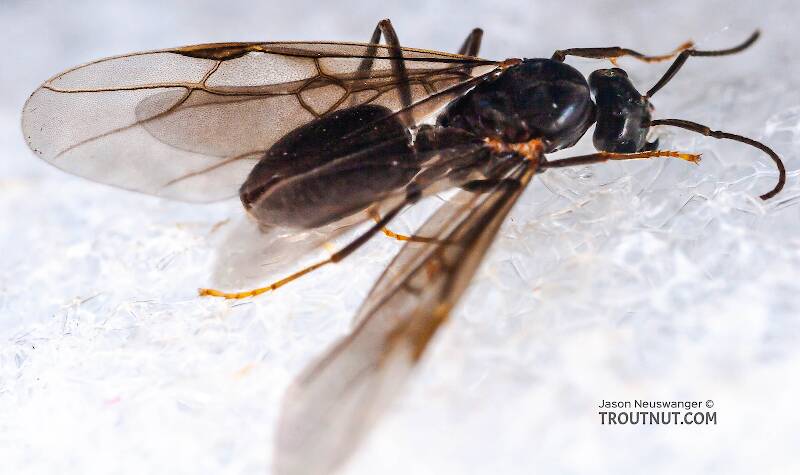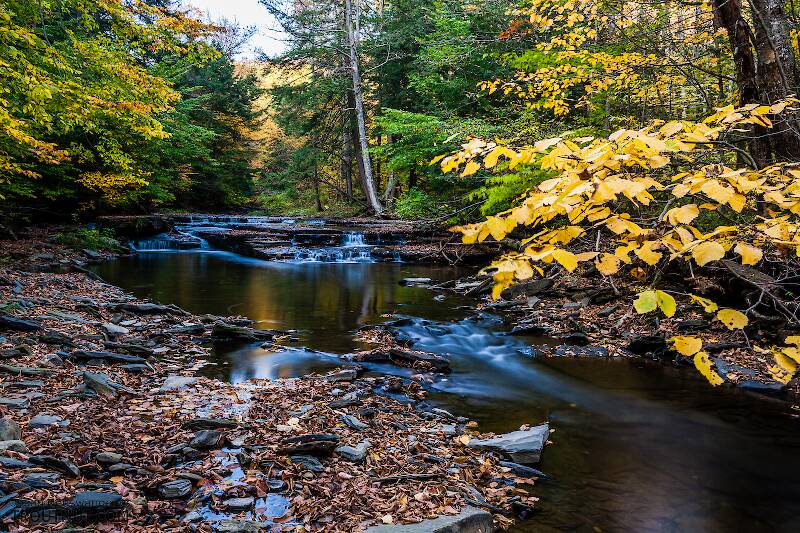
Salmonflies
Pteronarcys californica
The giant Salmonflies of the Western mountains are legendary for their proclivity to elicit consistent dry-fly action and ferocious strikes.
Featured on the forum

This is the first of it's family I've seen, collected from a tiny, fishless stream in the Cascades. The three species of this genus all live in the Northwest and are predators that primarily eat stonefly nymphs Merritt R.W., Cummins, K.W., and Berg, M.B. (2019).

Troutnut is a project started in 2003 by salmonid ecologist Jason "Troutnut" Neuswanger to help anglers and
fly tyers unabashedly embrace the entomological side of the sport. Learn more about Troutnut or
support the project for an enhanced experience here.
Ants
This common name refers to only one family. Click its scientific name to learn more.
Insect Family Formicidae
These are pretty much always called Ants.
Ants are one of the best-known terrestrial food sources for trout. Wingless ants often stumble by accident into the water, making them a very common "occasional" item on the trout's menu. Imitations of these unlucky critters make excellent searching patterns in mid- to late summer.
The real fun with ants, however, comes from the mating swarms of winged species. They are spotty and hard to predict, but when they happen to fall over the water they can draw more trout activity than all but the best hatches of huge mayflies.
The real fun with ants, however, comes from the mating swarms of winged species. They are spotty and hard to predict, but when they happen to fall over the water they can draw more trout activity than all but the best hatches of huge mayflies.

This tiny size 24 flying ant was mixed with a larger variety (see this specimen) falling on the surface of a Catskill river. The trout seemed to respond well to ants of both sizes.
See 8 more specimens...
References
- Merritt R.W., Cummins, K.W., and Berg, M.B. 2019. An Introduction to the Aquatic Insects of North America (Fifth Edition). Kendall/Hunt Publishing Company.

